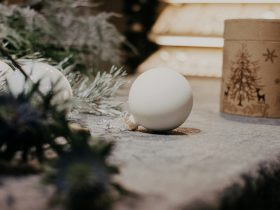As the colder months approach, preparing your home is essential to keep it warm, comfortable and energy‑efficient.
Winter weather can strain your heating system, increase energy bills, and even cause damage if your home isn’t ready.
By taking proactive steps now, you can ensure a cosy, safe home while avoiding costly repairs.
This guide explains how to prepare your home for winter, from insulation and heating checks to protecting your property against frost and damp.
1. Check and Maintain Your Heating System
Before the cold sets in, it’s important to ensure your heating system is working efficiently.
-
Service your boiler: Arrange a professional boiler service to avoid breakdowns during winter.
-
Bleed radiators: Removing trapped air improves efficiency and heat distribution.
-
Check thermostats: Ensure they are working correctly and consider installing a smart thermostat for energy savings.
-
Inspect pipes: Look for signs of leaks or damage and insulate any exposed pipes to prevent freezing.
2. Improve Home Insulation
Good insulation keeps warmth in and cold air out, reducing heating costs and improving comfort.
-
Loft insulation: Check your loft insulation levels. Ideally, you need at least 270mm of insulation for optimum efficiency.
-
Wall insulation: Consider cavity wall insulation if your home has cavity walls. Solid walls can also benefit from internal or external insulation.
-
Floor insulation: Insulating floors can prevent heat loss and make your home more comfortable.
3. Draught Proofing
Draughts cause heat loss and make your home feel colder. Simple steps can make a big difference:
-
Seal gaps around doors and windows with draught excluders or sealant.
-
Fit letterbox brushes to prevent cold air entering.
-
Use heavy curtains to add insulation and reduce heat loss.
4. Prepare Your Home Exterior
Winter weather can be harsh on your property. Protect your home by:
-
Cleaning gutters: Remove leaves and debris to prevent blockages and water damage.
-
Checking roof and tiles: Repair missing or damaged tiles to prevent leaks.
-
Inspecting exterior walls: Look for cracks or damage and repair them before winter.
-
Protecting pipes: Use pipe insulation for exposed plumbing and ensure outside taps are drained or fitted with frost covers.
5. Winter‑Proof Your Garden and Outdoor Spaces
Your garden also needs preparation for the colder months:
-
Store garden furniture and tools to protect them from frost.
-
Trim trees and hedges to prevent damage from snow or ice.
-
Drain garden hoses and store them indoors.
6. Safety Checks for Winter
Winter brings specific safety concerns, so prepare accordingly:
-
Check smoke and carbon monoxide alarms.
-
Keep a torch and emergency supplies ready in case of power outages.
-
Keep pathways clear of leaves, ice, and snow to avoid slips and falls.
7. Energy Efficiency Tips
Keeping your home energy‑efficient during winter can save money and reduce your environmental impact:
-
Lower your thermostat by a degree or two and wear warmer clothing indoors.
-
Use thick curtains and close them at night to keep heat in.
-
Invest in a smart heating system to control usage more effectively.
Preparing your home for the colder months doesn’t have to be daunting.
By maintaining your heating system, improving insulation, draught‑proofing, and protecting your property, you can enjoy a warm, safe and energy‑efficient home all winter long.
Taking action now not only improves comfort but also helps avoid costly repairs and high energy bills.
Start your winter home preparation today and enjoy peace of mind when the cold weather arrives.









Leave a Reply